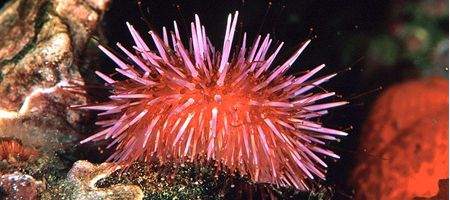The discovery that sea urchins use nickel particles to remove carbon dioxide from the sea could be the key to capturing tonnes of CO2 from the atmosphere.

Newcastle University researchers have discovered that, by using a nickel catalyst, CO2 can be converted quickly and cheaply into calcium carbonate – not only harmless, but useful.
Dr Lidija Šiller says the discovery was made completely by chance, after her team set out to understand in detail the carbonic acid reaction – the reaction between CO2 and water – and needed a catalyst to speed up the process.
“At the same time, I was looking at how organisms absorb CO2 into their skeletons and in particular the sea urchin which converts the CO2 to calcium carbonate,” she says.
“When we analysed the surface of the urchin larvae we found a high concentration of nickel on their exoskeleton. Taking nickel nanoparticles which have a large surface area, we added them to our carbonic acid test and the result was the complete removal of CO2.”
An enzyme called carbonic anhydrase has been used in the past to convert CO2 into calcium or magnesium carbonate. But this doesn’t work in acid conditions – and, since one of the products of the reaction is carbonic acid, this means the enzyme is only effective for a very short time and the process is very expensive.
“The beauty of a nickel catalyst is that it carries on working regardless of the pH and because of its magnetic properties it can be re-captured and re-used time and time again. It’s also very cheap – 1,000 times cheaper than the enzyme,” says PhD student Gaurav Bhaduri.
“What our discovery offers is a real opportunity for industries such as power stations and chemical processing plants to capture all their waste CO2 before it ever reaches the atmosphere and store it as a safe, stable and useful product.”
The team’s process involves passing the waste gas directly from the chimney top through a water column rich in nickel nano-particles, and recovering the solid calcium carbonate from the bottom.
“The capture and removal of CO2 from our atmosphere is one of the most pressing dilemmas of our time,” says Dr Šiller.
“Our process would not work in every situation – it couldn’t be fitted to the back of a car, for example – but it is an effective, cheap solution that could be available world-wide to some of our most polluting industries and have a significant impact on the reduction of atmospheric CO2.”






